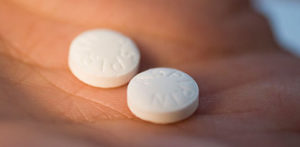Treating A Breast Lump
How a breast lump is treated will largely depend on the underlying cause and any other symptoms you have.
Benign breast lumps often do not need to be treated unless they are particularly large or painful, or are getting bigger.
Some types of benign breast lump, such as fibroadenomas, breast cysts and fat necrosis, may improve over time without any treatment.
If treatment is not necessary, you may be asked to return to your doctor if you notice any further changes to your breasts.
The main treatments for benign breast lumps are described below.
Medication
Medication may be recommended if your breast lump is causing pain or is the result of an infection.
Some of the medications that may be used include:
- Painkillers, such as paracetamol or non-steroidal anti-inflammatory drugs (NSAIDs)
- Tamoxifen, danazol or bromocriptine are very occasionally used to treat breast pain
- Antibiotics to treat breast abscesses caused by bacterial infections
For some, simple measures such as reducing the amount of saturated fat in your diet and wearing a well-fitting bra to support your breasts may also help reduce pain.
Drainage
In some cases, any fluid or pus contained within a breast cyst or a breast abscess may need to be drained. This is known as aspiration.
During the aspiration procedure, local anaesthetic is used to numb the area being treated and a needle is guided into place using ultrasound scans so the fluid or pus can be removed. In rare cases, a small cut may be made into an abscess to drain the pus.
The fluid sample may then be sent for testing to confirm the diagnosis.
Sometimes breast cysts that have been drained can refill. You should always visit your doctor if you notice any changes to your breasts after treatment. A cyst can be drained again, but you may need surgery to remove it if it keeps refilling.
Surgery
If a benign lump is particularly large or is getting bigger, surgery may be carried out to remove it.
Types of benign breast lumps that may sometimes need to be removed with surgery include fibroadenomas, breast cysts, fat necrosis and intraductal papillomas.
The surgical procedure to cut out a lump in your breast is called a lumpectomy and is usually carried out under general anaesthetic. In some cases, a special vacuum is used during the procedure to suck out the tissue forming the lump.
Once it is removed, the lump will be sent for testing to confirm the diagnosis.
You will usually be able to go home the same day of the operation. Possible risks and side effects of the operation can include temporary bruising, swelling or bleeding, and an infection in the treated area.
Read More ON:
Breast Lumps
Causes of Breast Lumps
Diagnosing Breast Lump
Breast Cancer
Symptoms of Breast Cancer
Symptoms of Breast Cancer in Men
Causes of Breast Cancer
Diagnosing Breast Cancer
Treating Breast Cancer
Preventing Breast Cancer
Living with Breast Cancer
Breast Cancer Screening
Source: NHS UK
http://www.nhs.uk/Conditions/Breast-lump/Pages/Treatment.aspx

